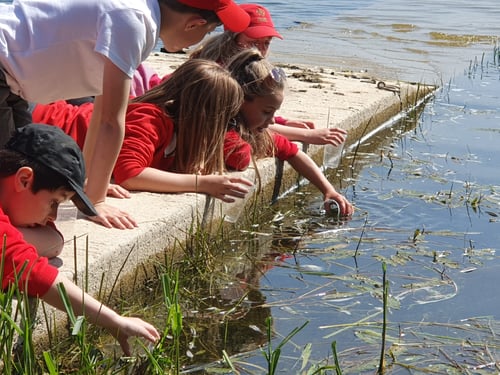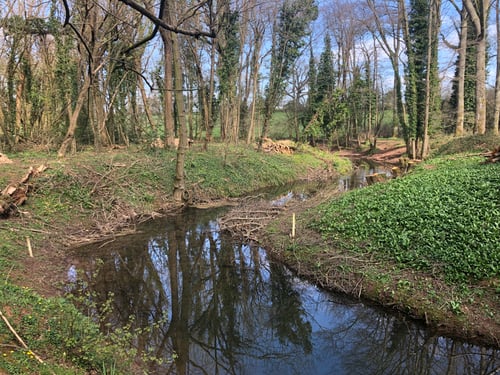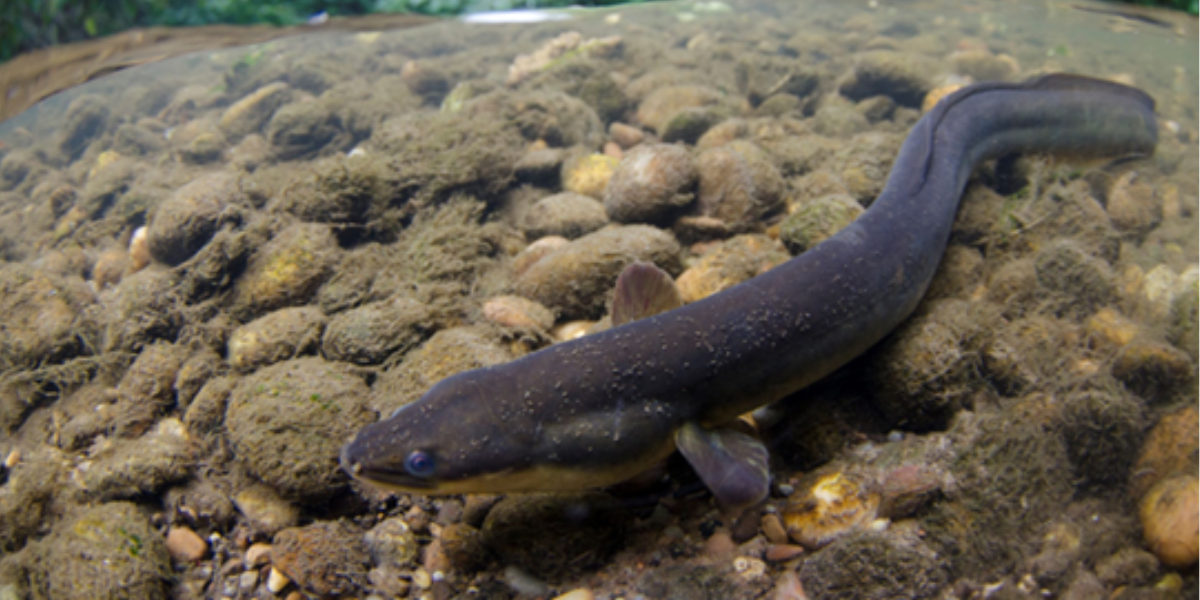
The European eel is one of the most endangered species in the UK. Over 95% of the eel population has disappeared in the last 40 years. The European eel inhabits our reservoirs and surrounding waterways, but not much is known about this mysterious creature.
Where does it all begin for the European eel?
The European eel begins its life near Bermuda in the Sargasso Sea. The eggs hatch into leaf shaped larvae that join the Gulf Stream, where they take 2 years to drift 4,000 miles across the Atlantic Ocean. When they reach the shores of Europe and North Africa they metamorphose into finger length see through eels, known as glass eels.
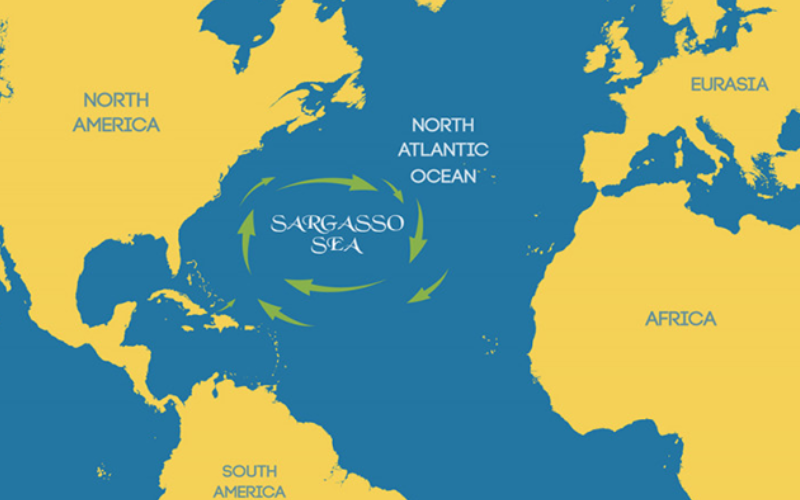 A map of the Sargasso Sea
A map of the Sargasso Sea
Eels continue their journey inland and the Severn Estuary is an important place for their onward migration. Eels travel up the Severn Estuary on spring tides between mid-February and mid-May. As they move inland they move from a saltwater to a freshwater environment. As they migrate up estuaries and rivers, the eels’ skin darkens in colour and they are now known as elvers.
As they migrate further upstream and find homes in rivers, they continue growing and changing colour to become yellow eels.
They can remain in these habitats for more than 20 years, feeding on invertebrates and fish and growing up to 1.5m long!
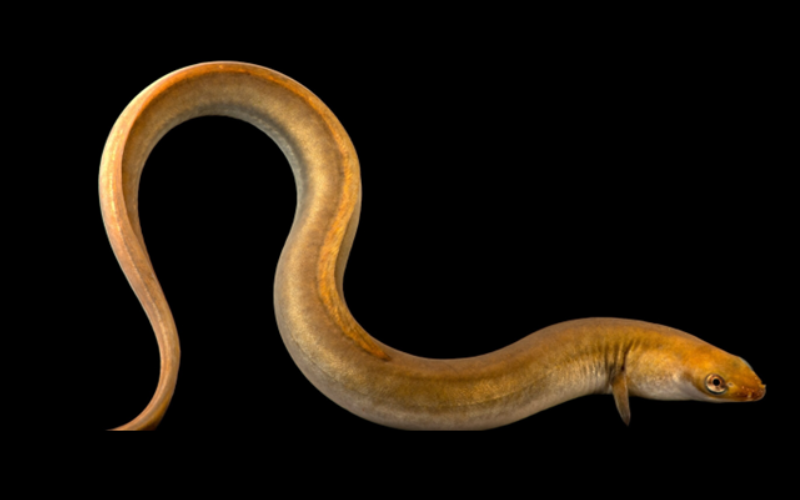 A closer look at the European eel
A closer look at the European eel
Once ready to reproduce, they transform into silver eels and travel back down the same rivers they travelled up years ago.
When they reach coastal waters they change colour to silver and grey, their faces get longer, their eyes grow and they stop eating and pooing. They then travel back across the Atlantic Ocean to the Sargasso Sea.
What has caused the decline in European eel numbers?
• Overfishing and illegal fishing
• Habitat loss and pollution
• Blockage of migration routes – dams, locks and weirs used to control the flow of rivers
• Invasive parasite
• Climate change/oceanic current shift
What is Bristol Water doing to help protect the European eel?
We have previously run a ‘Spawn to be Wild’ project where local schools have looked after a tank of elvers and released them into Blagdon Lake after 6 weeks. Around 4,000 eels have been released through this project and local school children have learnt about the life cycle of eels and how to help protect them.
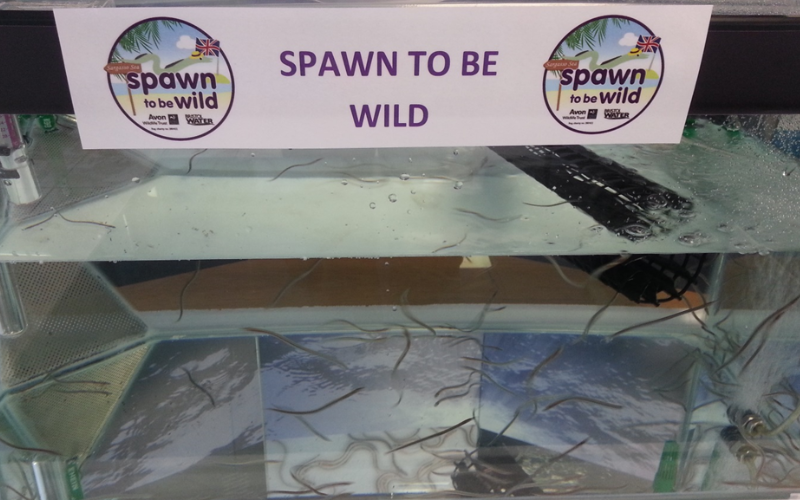 Bristol Water Spawn to be Wild project
Bristol Water Spawn to be Wild project
At Blagdon Reservoir we have an eel trap. Last year we transferred 895 eels into Blagdon Lake, and in total around 8 000 eels have been transferred into Blagdon Lake.
Due to the dam, the eels can not continue their migration up the River Congresbury Yeo into Blagdon Lake. The eel trap allows the eels to travel up the passages into the tank at the edge of the river. The passages have water flowing down them that the eels follow, and they are filled with bristles, to allow the eels to travel up the passages into the tank.
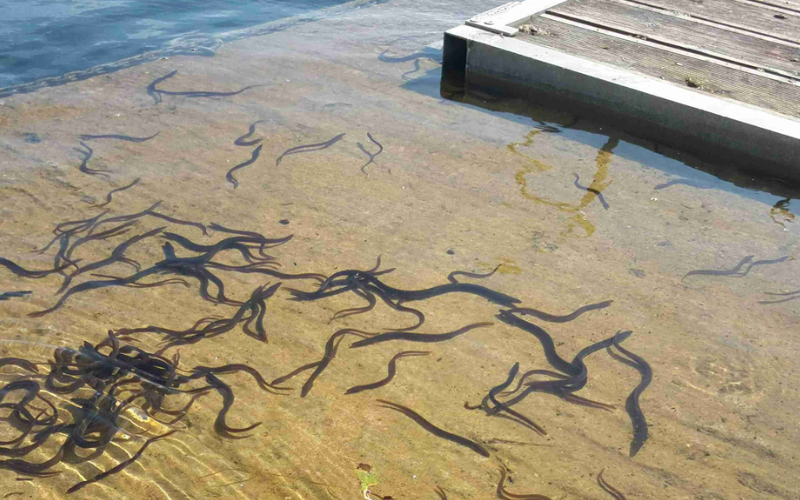 Eels being transferred into Blagdon Lake
Eels being transferred into Blagdon Lake
Once the eels are in the tank, they are fished out with a net and transferred into the lake, where the eels can remain for around 15 to 20 years, before making the return journey back to the Sargasso Sea to spawn. Bristol Water is also currently working on a project to put in a new eel pass at Chew Valley Lake to allow the continued migration of eels up the River Chew into Chew Valley Lake.
